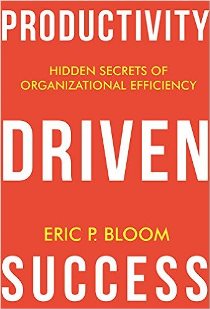As an IT leader earlier in my career, no matter how much time, money and resources I had at my disposal, I always wished I had just a little bit more.
There was always that next great project I didn’t have the budget for, or that software which would have been a great addition to our infrastructure.
One way to help fund these projects that are just out of budgetary reach is through enhanced productivity in your base operations. You can harvest and specifically direct the time, money and resources made available by enhanced efficiencies to partially or fully fund seemingly out-of-reach projects. I call this strategy “productivity-driven IT reinvestment.”
Productivity-Driven IT Reinvestment
The goals that can be achieved through productivity-driven IT reinvestment fall into three categories:
1. Drive efficiency across the boardRequiring a portion of all projects, say 10%, to be funded by productivity savings drives efficiency into existing processes while funding new initiatives. In effect, this forces managers to continue to search for organizational efficiencies within their existing operations rather than incrementally chasing funding for the next hot project.
2. Fund unbudgeted projects
Your productivity-driven IT reinvestment strategy can be used to fund projects that are proposed after departmental budgets have been finalized. This gives managers a way to self-fund newly arising department activities.
3. Keep IT spending flat
If for business reasons your organization must keep spending flat, productivity-driven IT reinvestment can be used as a way of funding new projects without increasing your overall budget.
For productivity-driven IT reinvestment to work, a high level plan must be put in place that:
- Lists specific productivity projects to be performed
- Estimates of time, money and resources each project will yield
- Lists IT initiatives that will be receiving these newly available staff, funds and assets
This plan defines the goals and expected results of each individual productivity initiative and helps you plan and schedule the newly funded projects. In addition, it keeps pressure on your productivity initiatives because the people working on the projects realize that other IT initiatives are relying on their success.
Directing Productivity Gains into IT Investment
Next, you must have processes in place which track project status and measure created productivity gains. The tracking of productivity projects has two dimensions. The first type is the standard reporting done on all IT related projects. The second type measures all incremental process improvements, ongoing cost reductions and other gained efficiencies, which in turn, help maximize the project’s calculated return on investment.
Once confident that the desired productivity improvements are in place, you must also have the ability to reallocate the newfound employee time, freed up software licenses, computer hardware and other IT assets to the specific projects waiting for their receipt. This can be performed via a centralized bookkeeping process that moves the newly found time, money and resources into a temporary holding area, and then reallocates them to other needed areas within IT.
Lastly, you should be willing to give credit and recognition to those who achieved these productivity gains. This with help inspire others within IT to successfully complete their assigned productivity enhancement projects as well as build momentum for your productivity enhancement program by raising its awareness inside and outside of IT.
Where You Find the Money
Increasing the efficiency of your salaried employees doesn’t necessarily save money. Their salaries must still be paid. It does, however, provide them the time to do other meaningful work. The key is to redirect their time saved to work on other meaningful projects, and not just let it melt away into longer lunches. Money can be found in multiple areas, such as the processes that reduce the amount spent on hourly contractors and vendors. Funds can also be harvested in the form of reduced vendor costs, modifications to Service Level Agreements, the phasing out of redundant legacy technologies, server consolidation and reduced licensing agreements.
Enhanced IT productivity can show up in other forms besides time, money and resources. For example, it can come in the form of shorter delivery dates, enhanced client service, faster movement to new technologies, and increased system availability. The trick is to think about productivity enhancement strategically and not just as a way to reduce costs.
Generally speaking, managers seeking project funding may not be too enthusiastic about the productivity-driven IT reinvestment concept because it requires more work and forethought than simply asking for additional funds. Over time, however, the incremental innovations and efficiencies it forces into the organization will provide considerable long term gains. It also has the potential to gradually evolve the organization’s internal culture toward a state of continual improvement.


Written by Eric Bloom
Eric Bloom is the Executive Director of the IT Management and Leadership Institute, a leading provider of IT leadership, interpersonal communication, and business skills training and certification. Eric is also an Amazon #1 bestselling author, former nationally syndicated columnist, Certified Professional Speaker (CSP), TEDx Talk speaker, trainer, CIO.com contributor, past President of National Speakers Association (NSA) New England, and an IDC Research Advisor. His books include the Amazon #1 bestseller “Productivity Driven Success: Hidden Secrets of Organizational Efficiency”, Office Influence: Get what you want, from the mailroom to the boardroom, and "The CIO’s Guide to Staff Needs, Growth, and Productivity."



